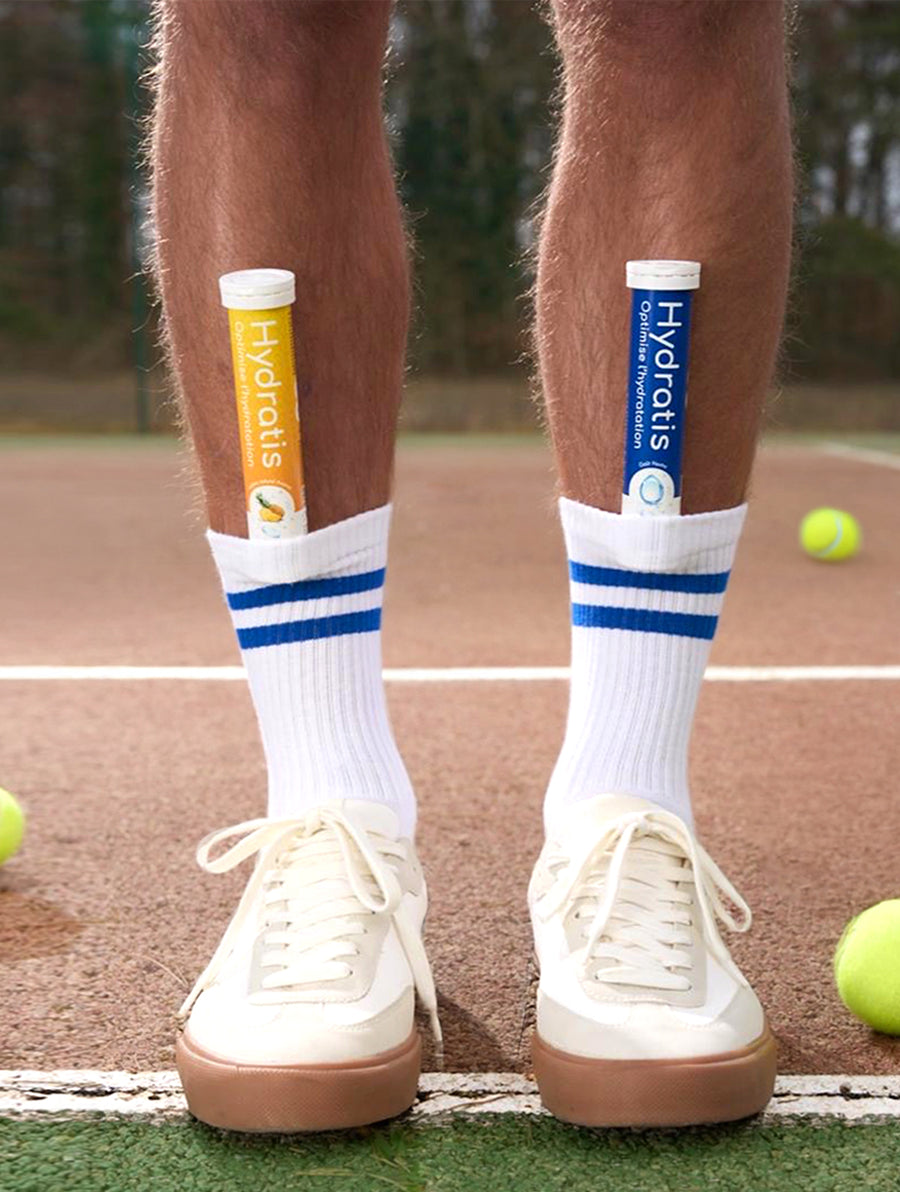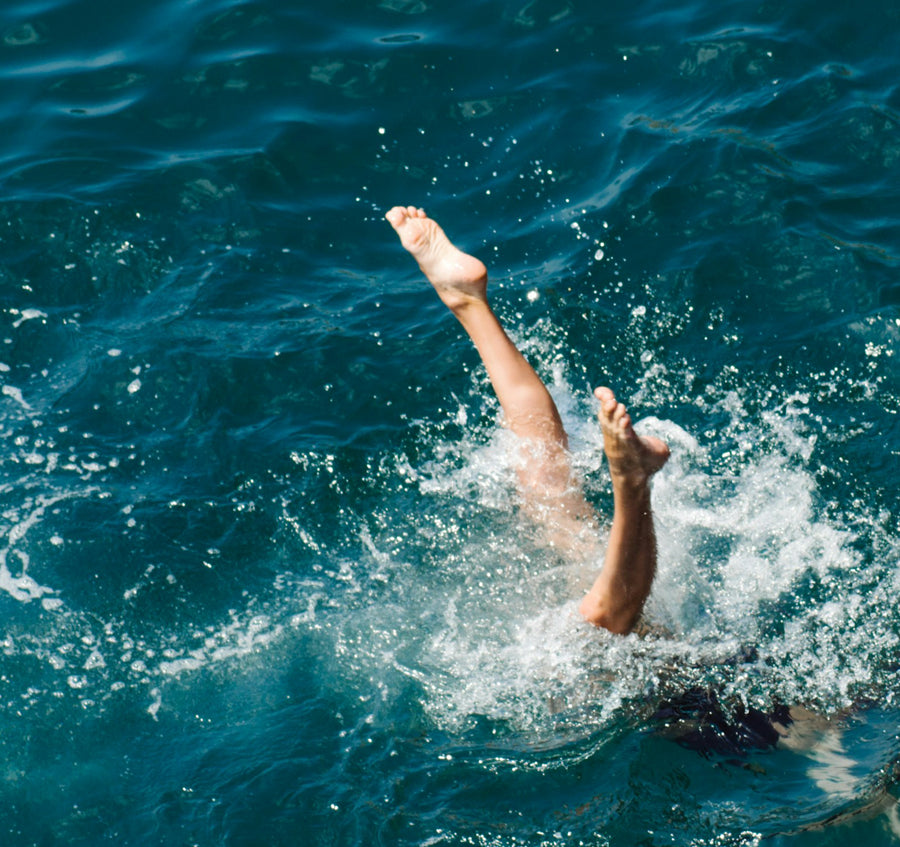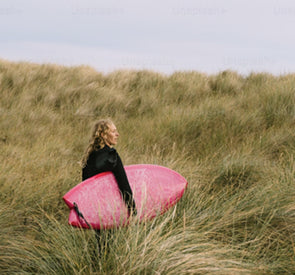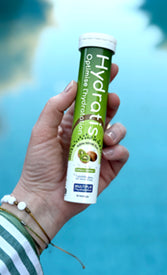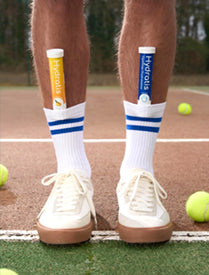In trail running, hydration is just as crucial as training or choosing your gear. However, drinking only water isn't always enough. That's why energy drinks are essential for maintaining your performance . If chosen incorrectly , however, they can cause digestive problems or worsen dehydration .
In this article, you'll learn more about the best energy drinks for trail running, how much to consume, and how often. We'll also give you tips on preparing your own sports drink and common mistakes to avoid.
Why is proper hydration essential in trail running?
In trail running, as in any sporting activity, your hydration level directly impacts your performance . As soon as you lose approximately 2% of your body weight in water, your physical abilities can drop by up to 20% .
The first signs of dehydration The following symptoms quickly appear: heavy legs, early fatigue , and decreased endurance. At this stage, alertness and concentration may also decrease.
If the effort is prolonged without sufficient compensation, the deficit worsens . The discomfort then becomes more serious : muscle cramps , headaches , digestive problems, dizziness, or even heatstroke .
Under these conditions, slowing down or giving up sometimes becomes inevitable!
Water, isotonic or hypertonic drink: which to choose?

Water alone: advantages and limitations
Water remains the foundation of all hydration . It can replenish fluids lost during short efforts (less than an hour) or those performed at moderate intensity . However, during longer events, or in intense heat , its limitations become apparent: it provides neither electrolytes nor energy. In excess , it can even dilute blood sodium levels and contribute to hyponatremia .
Isotonic drinks: a balance between hydration and energy
For efforts lasting more than two hours , we recommend choosing an isotonic drink . Its carbohydrate and electrolyte composition is similar to that of blood plasma , making it rapidly absorbed by your body .
This type of drink helps maintain hydration and energy levels while minimizing the risk of digestive discomfort. That's why it's the preferred option for an energy drink during trail running .
Hypertonic drinks: a significant source of energy
Because they are more concentrated in solutes than plasma, hypertonic energy drinks are digested more slowly by your body. During exercise, they may therefore cause digestive problems .
However, these drinks are particularly beneficial after a race or during extended aid stations on an ultra-trail , contributing to energy recovery . Their carbohydrate content promotes the replenishment of glycogen stores , while the electrolytes help restore fluid and mineral balance . It remains essential, however, to continue drinking water in addition to ensure complete rehydration.
The benefits of energy drinks in trail running
Electrolyte supplementation to prevent cramps
Beyond an hour , the needs are greater. Sodium, potassium , and magnesium are eliminated through sweat , especially in hot weather. However, these Electrolytes are involved in muscle contraction, nerve transmission and maintaining fluid balance.
A deficiency increases the risk of cramps and accelerates muscle fatigue. A well-formulated energy drink can help compensate for some of these losses and minimize discomfort.
The role of carbohydrates in maintaining energy
Your muscles use glycogen as their primary fuel. On a trail run lasting several hours, blood glycogen stores are quickly depleted (after about an hour and a half) . Without external replenishment, an energy drop is inevitable : fatigue, decreased performance, and loss of concentration. The carbohydrates in your sports drink therefore provide the energy needed to replenish glycogen stores .
Some energy drinks combine fast-acting sugars ( glucose, fructose ) for an immediate effect and complex carbohydrates ( maltodextrin ) for sustained energy. This combination is ideal for maintaining your endurance during races lasting more than 3 hours .
Examples of ideal compositions
These forks are General indicators . Always adapt to your own needs.
Short trail (<2 h) : 20 - 30 g/L of carbohydrates and 300 - 500 mg/L of sodium: a light and easy-to-digest drink.
Long trail (2–6 h) : 30-60 g/L of carbohydrates ( maltodextrins + glucose/fructose ) and 250–700 mg/L of sodium, with 110–200 mg/L of potassium: ideal for maintaining energy and hydration.
Ultra-trail (>6 h ): 40–60 g/L of carbohydrates and 600–1000 mg/L of sodium, enriched with potassium and magnesium: isotonic drink to be supplemented with a solid diet.
Some tips for making the right choice
In stores , the range of energy drinks suitable for trail running is vast. Each product has its own specific characteristics and is designed to meet a particular need. Therefore, don't rely solely on price , comparisons, and reviews when making your choice.
- Take into account your perspiration profile , the climatic conditions , the duration of the effort , the difficulties of the terrain...
- Choose drinks made with natural ingredients , without additives or chemical preservatives. Check the ingredient list to assess the quality.
- Evaluate the supplements . Some products contain BCAA amino acids. but also proteins, caffeine and vitamins . These elements can limit muscle fatigue during ultra-trail running, but they are not essential.
- Choose the right format . You will have a choice between ready-to-drink solutions, Powders to dilute and sticks .
- Don't neglect the taste . A pleasant flavor promotes regular hydration, without nausea .
Every body is unique. Always test a new drink during your workouts to assess your digestive tolerance and its energy-boosting properties. before D-Day .
Warning : Do not confuse sports energy drinks with industrial energy drinks (classic energy drinks). These, rich in synthetic caffeine, sugar and stimulants, should not be used as a sports drink for trail running.
When and how should I drink during a trail run?
Hydration before the race: should you load up on electrolytes?
The goal before departure is not to drink large quantities at all costs or to saturate the body with electrolytes . Simply ensure that your water and mineral reserves are adequate. Excessive intake could, on the contrary, cause kidney overload or a sodium imbalance .
On a short trail run in cool weather , there's no need to load up on electrolytes before the race. A balanced and varied diet can cover your sodium, potassium, and magnesium needs .
In the days prior , maintain normal hydration (1.6 to 2 L of water per day).
On a For long/ultra format or in summer, drink between 300 and 600 ml of a light isotonic drink (20-30 g/L of carbohydrates, 400 to 600 mg/L of sodium), 1 to 2 hours before departure.
In addition, you can consume 200 to 300 ml of mineral-enriched water approximately 20 minutes before the race . Simply dissolve an electrolyte tablet or a pinch of unrefined salt in it.
Hydration plan: frequency and quantities to follow
During exercise, opt for small sips rather than large amounts all at once. Ideally, drink your trail running energy drink every 10 to 20 minutes . Adjust this according to your digestive tolerance, the heat, the altitude, and your perspiration.
On a long/ultra trail run , also plan to bring sugar-free electrolyte-enriched water in addition to the isotonic energy drink.
|
Race format |
Total recommended volume |
Volume per hour of effort |
By taking |
|
Short trail run (<2 hours) |
500 mL to 1.5 L |
– |
100 to 150 mL |
|
Long trail (2–6 hours) |
– |
500 ml to 1 L |
100 to 200 mL |
|
Ultra (>6 h) |
– |
600 to 850 mL |
100 to 200 mL |
How to adapt your hydration according to the climate and elevation?
Water requirements depend not only on the duration of the effort. Weather and terrain also influence your strategy.
- In hot weather , above 25°C: perspiration increases. Electrolyte loss also increases. Therefore, it's necessary to slightly increase fluid intake to compensate.
- In cold weather : the sensation of thirst decreases. However, continue to drink regularly to avoid dehydration.
- When climbing : the pace is often less intense than when descending or on flat terrain. Slightly reduce your energy drink intake and alternate with water (or water + electrolytes) to compensate without overloading your stomach.
Which energy drink should I choose for a long workout?

Homemade alternatives for a natural energy drink
Besides commercial products , you can prepare your own isotonic energy drink for trail running from simple ingredients.
Example 1 : 3 tablespoons of honey (≈ 63 g of carbohydrates) and ¼ teaspoon of sea salt (≈575 mg of sodium) in 1 L of magnesium-rich water.
Example 2 : 800 mL of water + 200 mL of grape juice (≈32 g of carbohydrates) + 2 tbsp of honey (≈34 g of carbohydrates) + ¼ tsp of salt.
These preparations provide fast-acting carbohydrates, electrolytes, and natural antioxidants. Always test them during training to check digestive tolerance.
Practical tips:
- Adjust the concentration of carbohydrates and salts according to the temperature and duration of the trail run.
- Use 100% pure fruit juice, organic and with no added sugar.
- Vary the fruits: grapes, apples…
- Replace the honey with agave syrup if needed.
- Add lime for vitamin C and mint for a refreshing effect.
Why choose Hydratis?
During a trail run, sports drinks alone don't always compensate for mineral losses, especially in hot weather. Drinking water containing electrolytes can optimize hydration and replenish sodium lost through sweat.
Hydratis lozenges are formulated to meet this specific need. Inspired by oral rehydration solutions (ORS) , they provide optimal amounts of sodium, potassium, magnesium, chloride, zinc, and manganese. Their formula contains a minimal amount of sugar, but this is necessary to optimize the absorption of water into your bloodstream. (1.9 g per tablet), without sorbitol or artificial additives.
Easy to use, they dissolve in seconds in a flask of pure water. Available in tubes of several flavors (peach, kiwi, forest fruits), Hydratis tablets make hydration more enjoyable , even during long periods of exertion.
Mistakes to avoid with energy drinks
Too much sugar = digestive problems and fatigue
An overly sugary energy drink becomes hypertonic . During exercise, it slows gastric emptying and causes digestive discomfort, nausea, and even diarrhea. This is compounded by the risk of a blood sugar spike, followed by a sudden drop in energy.
Whether you prepare your own drinks or opt for a commercial product , avoid formulas exceeding 80 g/L of carbohydrates unless you are accustomed to that level . Instead, choose balanced isotonic drinks with a carbohydrate content between 6 and 8%.
Mixing several drinks: good idea or bad idea?
Changing your drink can be a useful strategy… if it’s done thoughtfully.
Your needs change during the trail run:
- Downhill, flat terrain: an isotonic drink to combine hydration and energy;
- During refueling or on less intense sections: a drink rich in electrolytes , to compensate for mineral losses.
The mistake would be to mix different types of drinks in a single water bottle .
For a long/ultra trail run , bring at least two containers. Ideally:
- a pouch or water bottle for the isotonic energy drink;
- a second one for pure water or water containing electrolytes.
Therefore, you can alternate according to intensity, duration and temperature to optimize your intake without excess.
Drinking only when thirsty: why is this a mistake?
Thirst is a late warning sign. In fact, by the time it appears, dehydration has already begun . Relying solely on this sensation can therefore compromise your performance. The best approach is to follow a regular hydration plan , tailored to your individual needs and adjusted to the race conditions.
Bibliography
Cheuvront, SN, & Kenefick, RW (2014) . Dehydration: physiology, assessment, and performance effects. Comprehensive Physiology, 4(1), 257–285. https://doi.org/10.1002/cphy.c130017
Hew-Butler, T., Rosner, MH, Fowkes-Godek, S., Dugas, JP, Hoffman, MD, Lewis, DP, Maughan, RJ, Miller, KC, Montain, SJ, Rehrer, NJ, Roberts, WO, Rogers, IR, Siegel, AJ, Stuempfle, KJ, Winger, JM, & Verbalis, JG (2015) . Statement of the Third International Exercise-Associated Hyponatremia Consensus Development Conference, Carlsbad, California, 2015. Clinical journal of sport medicine: official journal of the Canadian Academy of Sport Medicine, 25(4), 303–320. https://doi.org/10.1097/JSM.0000000000000221
B urke, LM, Hawley, JA, Wong, SHS, & Jeukendrup, AE (2011) . Carbohydrates for training and competition. Journal of Sports Sciences, 29(Suppl 1), S17–S27. https://doi.org/10.1080/02640414.2011.585473
Yu-Yahiro JA (1994 ). Electrolytes and their relationship to normal and abnormal muscle function. Orthopedic nursing, 13(5), 38–40. https://doi.org/10.1097/00006416-199409000-00008
Wallis, GA, Rowlands, DS, Shaw, C., Jentjens, RL, & Jeukendrup, AE (2005) . Oxidation of combined ingestion of maltodextrins and fructose during exercise. Medicine and science in sports and exercise, 37(3), 426–432. https://doi.org/10.1249/01.mss.0000155399.23358.82
Rowlands, DS, & Houltham, SD (2017) . Multiple-Transportable Carbohydrate Effect on Long-Distance Triathlon Performance. Medicine and science in sports and exercise, 49(8), 1734–1744. https://doi.org/10.1249/MSS.0000000000001278
Jeukendrup AE (2004) . Carbohydrate intake during exercise and performance. Nutrition (Burbank, Los Angeles County, Calif.), 20(7-8), 669–677. https://doi.org/10.1016/j.nut.2004.04.017
Rehrer, NJ Fluid and Electrolyte Balance in Ultra-Endurance Sport. Sports Med 31, 701–715 (2001) . https://doi.org/10.2165/00007256-200131100-00001
Von Duvillard, SP, Braun, WA, Markofski, M., Beneke, R., & Leithäuser, R. (2004) . Fluids and hydration in prolonged endurance performance. Nutrition (Burbank, Los Angeles County, Calif.), 20(7-8), 651–656. https://doi.org/10.1016/j.nut.2004.04.011
Pérez-Castillo, Í. M., Williams, JA, López-Chicharro, J., Mihic, N., Rueda, R., Bouzamondo, H., & Horswill, CA (2023) . Compositional Aspects of Beverages Designed to Promote Hydration Before, During, and After Exercise: Concepts Revisited. Nutrients, 16(1), 17. https://doi.org/10.3390/nu16010017
American College of Sports Medicine, Sawka, MN, Burke, LM, Eichner, ER, Maughan, RJ, Montain, SJ, & Stachenfeld, NS (2007). American College of Sports Medicine position booth. Exercise and fluid replacement. Medicine and science in sports and exercise, 39(2), 377–390. https://doi.org/10.1249/mss.0b013e31802ca597

